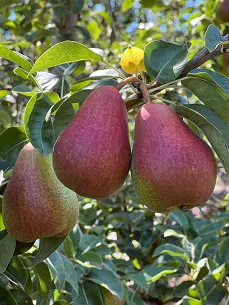The start of the topfruit season wasn’t auspicious but, as poorly as it had started, it could be heading to a strong run for South African pears.
Marketing the early Williams or BC crop was complex, with Packhams from the previous season still available. That in itself is not unusual, says a pear exporter who wishes not to be named, and can be managed when the two varieties are sent different places.
“Packham will always be a level above a BC but we feel that the previous season’s pears should be marketed before the new season’s big pears start, or should be sent to a market where the new season BC pears can’t go, like China or India, because of the cold regime,” he opines. The Middle East, too, doesn’t pull green BC pears.
Therefore, Europe and Russia remain as the main markets for South African BC pears. The pear market in Europe has been good for South African pears all along, he says and it's having to compete with a new market for South African pears: China.
The pear market in Europe has been good for South African pears all along, he says and it's having to compete with a new market for South African pears: China.
“Access to China has just lifted the entire market on pears,” he says.
“South African products are popular in China and they do like a South African Forelle. The buyers look out for our PUC code.”
Being able to send pears to China has brought, he says, a “fresh breeze” to the pear industry.
However, Forelle orchards in the Langkloof were hard hit by hail in February, a few months after hail storms had moved through topfruit orchards in the Ceres area.
For the past few years the industry has been hard at work erecting hail nets in areas for whom hail used to be an oddity. Without the acreage under nets, he remarks, the losses would have been much worse.
The Forelle market has remained quite strong and, slowly but steadily, he adds, they can see an improvement in the economies where they trade.
Sign up for our daily Newsletter and stay up to date with all the latest news!
Subscribe I am already a subscriber